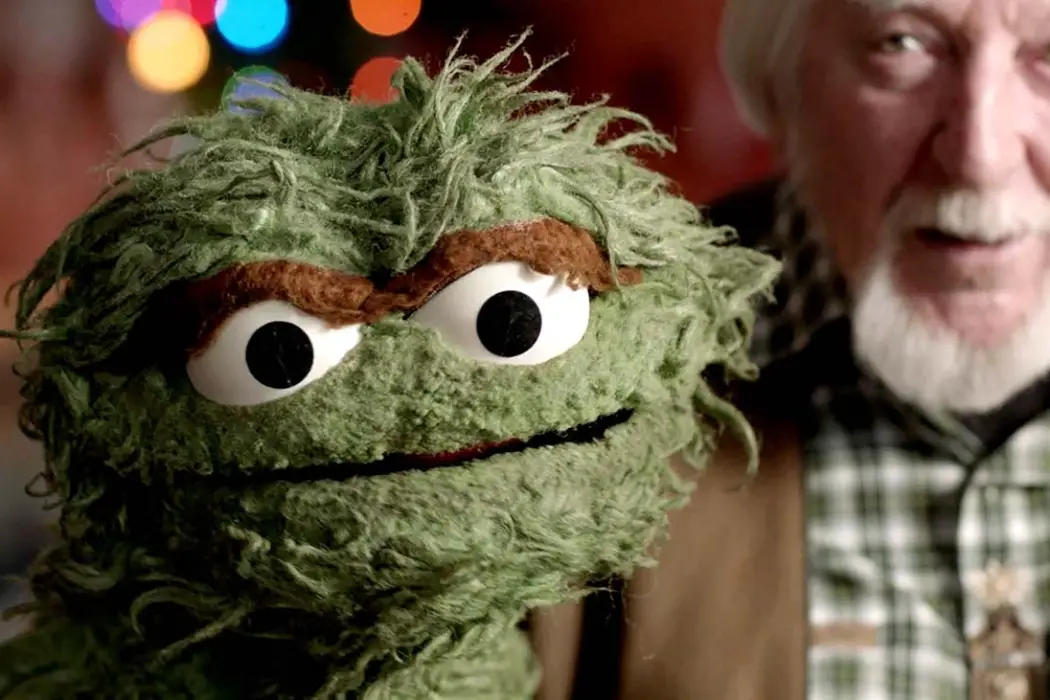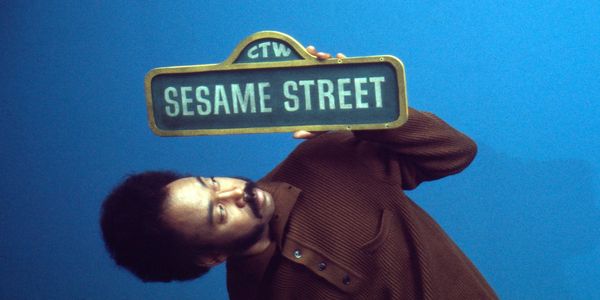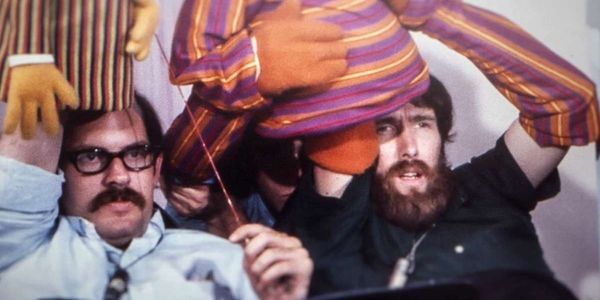STREET GANG: HOW WE GOT TO SESAME STREET: The Reinvention Of Children’s Television For Everyone

Spent most of my life watching and discussing movies. Writing…
As a child, an unmistakable song about an inner-city block filled with friendly neighbors, silly monsters, and a seven-foot bird with a child-like imagination rang out every morning in households nationwide. It’s this neighborhood where kids learned numbers from a wacky vampire and sang the alphabet along with adorable felt creations. Never pandering and always engaging, Sesame Street shaped the lives of children of all walks of life from 1969 to the present with fun, memorable, and most of all, original methods of education. Street Gang: How We Got To Sesame Street, the new documentary from Marilyn Agrelo of Mad Hot Ballroom fame, lays out the creation of The Children’s Television Network and the worldwide phenomenon known as Sesame Street.
Sunny Day, Chasing The Clouds Away
Spearheaded by creator/producer Joan Ganz Cooney, Sesame Street began with concern for inner-city youth falling behind in school. Areas like Harlem in New York City were desperate to educate kids due to lack of funding, good schools, and relatable sources of children’s programming. They would generally start school later and weren’t afforded the same benefits as more affluent neighborhoods throughout the city. Kid’s shows didn’t speak to minority audiences and generally advertised to the viewers rather than nurtured basic educational foundations like reading and math. Selling products to kids was a bone of contention for Sesame Street director John Stone, who worked on the show from day one until his death in 1997. Cooney, Stone, and experimental psychologist/co-founder of the Children’s Television Network Lloyd Morrisett were determined to change the face of children’s educational entertainment, especially in regards to inner-city kids.

Noticing a trend in what children retained while watching television, beer commercials caught the creators’ attention. Rather, the fact that kids remembered and sang the jingles they heard on TV. This sparked a study where Cooney, child psychologists, and educators devised methods to see what stimulated kid’s memories and attention. The group put together fun skits about letters and numbers and had children watch on a monitor, while off to the side a projector would loudly click random pictures as a distraction. Interested to see if the skits would hold the attention of a child amidst the background interruption, they found what worked and what didn’t. After this long period of trial and error was complete, the world we know as Sesame Street began to take shape with the help of Jim Henson and his imaginative array of Muppets. Originally, Henson‘s creations were seen mostly seen on late-night television and local advertisements which catered to a more adult crowd but it wouldn’t take long for The Jim Henson Workshop and his crew to bring their offbeat sense of fun to a younger audience. The thought in everyone’s mind was if kids watched TV half their lives, they could watch good shows.
Once said about Sesame Street, “It’s what television would do if it loved people instead of trying to sell to people. It makes all the difference in the world.”
How To Get to Sesame Street
With the pieces in place, the final step was to choose a backdrop for the show. For so long, shows set their characters in magical kingdoms or bright, shiny playhouses. Being the concept relied heavily on the integration of children of every background, the idea was to use New York City as its focal point. Specifically, a neighborhood that felt real to the audience who the creators wanted to help the most, inner-city youth. Playful, but familiar sets were constructed to resemble brownstone apartments and a variety of local storefronts, creating a world many kids could relate to. “The action was on the street” in impoverished communities, so what better place to learn than in a realm of familiarity. The title Sesame Street came from the term “open, says me”, commonly pronounced ‘sesame’, which Kermit The Frog comes up with during a short pitch reel made to sell the show to PBS. The idea was to open up a world of ideas on a friendly neighborhood block.
Originally, the real-life actors were to inhabit Sesame Street, leaving The Muppets to perform short interstitial sketches. This was soon scrapped, allowing for a more fun environment where both humans and Muppets co-existed in the same universe. The change brought the show to another level, playing off of concepts like diversity and community while normalizing our differences in a celebration of understanding and acceptance. Throughout the documentary, the diverse cast recalls the elation they felt by being represented as more than mere stereotyped figures the way most shows portrayed persons of color. Emilio Delgado, who played Fix-It Shop owner Luis Rodriguez, talks about how before landing the role he was only asked to play criminals when auditioning for television programs. For the first time, he was able to embrace and teach his proud culture which had a limited voice in entertainment.

One of the more prolific figures early on was African-American actor Matt Robinson who originally played Gordon. Know for hosting Opportunity In Philadelphia, a weekly show discussing minority employment, Robinson‘s history as a voice for his community made him the perfect choice to represent a culture rarely seen in children’s television. Robinson even created and performed a character named Roosevelt Franklin, an African-American Muppet who was unfortunately written off of the show due to complaints from ignorant parents of the era. Disheartened by the decision to stop using the character, Robinson eventually left the show and was replaced by actor Roscoe Orman who played Gordon until 2018.
More Than Just A Kid’s Show
Sesame Street became a phenomenon almost immediately, spreading the fun of learning and embracing our differences. So much so that when a Mississippi public television station refused to air it, the outcry from young fans lead to it being aired on commercial television for a short time, until the public station changed its tune. More than just a silly show to keep kids quiet while mom and dad had their morning coffee, Sesame Street became an epicenter of learning far beyond just ABCs and 123s. The show tackled subjects other programs shied away from. Thought to be taboo subjects such as breastfeeding was normalized through well-plotted segments with the help of educational psychologists like Sharon Learner, who brought together creatives and educators in order to shape these moments into something a child could grasp.
One of the more difficult topics came with the loss of actor Will Lee who played the loveable grocery store owner, Mr. Hooper. After his death, it was decided that rather than saying he moved or retired, the storyline would try to explain death to children in a way they could comprehend. Using Big Bird as the avatar of a child coming to grips with the situation, the cast, who was dealing with the actual loss of their friend, explained the concept of dying in one of the most memorable, and in my opinion, perfect ways. I would be remiss to say I didn’t shed a tear while watching this segment, which I remember all too well from when I was a child. This moment exemplifies the true brilliance of the series.
It’s Not Easy Being Green
Least we forget to talk about Jim Henson and The Muppets. Henson‘s involvement helped to flesh out the human element of Sesame Street through irreverence and creativity. Gone were the days of stiff, wooden puppets and socks on hands. Ever the showman, his knack for finding new ways to animate the inanimate and breathing a soul into each character was what made The Muppets so special. His innovative approach mixed with a sense of humor never felt, pun intended, lazy, or childish. Henson‘s creations seemed as real as any of the actors who played alongside them, only adding to the believability of the world they inhabited. These were characters you got to hang out with every day. You got to know them. Laugh with them. Learn with them as you would your best friends.

There was a magic to how Henson brought his creations to life. Big Bird was more than a hand up the back of some puppet. He was a living being who represented us as children. We could empathize with his want to understand the huge beautiful world around us. Oscar The Grouch showed us the darker side of ourselves. Rather than pretending we never have a bad day, he showed us that it’s alright to feel grouchy sometimes. Ernie and Bert taught us about what it meant to be best friends even when we don’t always see eye to eye. Every character is a sort of id of emotions and personality traits kids were beginning to discover within themselves and The Muppets always made those feelings acceptable to embrace.
Coupled with the brilliant songs created primarily by musical director/composer Joe Raposo, numbers like “It’s Not Easy Being Green” became more than just a song about a frog wishing he were a different color. It held a deeper truth about how we might not always be comfortable being who we are, but it doesn’t make you any less special. The skits were meticulously crafted with everyone in mind, which for the time helped Sesame Street stand out as a progressive masterpiece of learning.
Conclusion: Come and Play. Everything’s A-OK.
To say I recommend this documentary is a blatant understatement. Being able to pull back the curtain on a show which shaped so many lives over the years, was both entertaining and emotionally powerful. A true time capsule of nostalgia, Street Gang: How We Got To Sesame Street is a celebration of childhood, the beauty of diversity, and the magic of learning.
What are some of your favorite Muppet movies or shows and why? The Film Inquiry Community is always interested in what our readers have to say. Leave a comment and keep the conversation going.
Street Gang: How We Got To Sesame Street releases April 23, 2021.
Watch Street Gang: How We Got To Sesame Street
Does content like this matter to you?
Become a Member and support film journalism. Unlock access to all of Film Inquiry`s great articles. Join a community of like-minded readers who are passionate about cinema - get access to our private members Network, give back to independent filmmakers, and more.
Spent most of my life watching and discussing movies. Writing is a way to keeping the conversation going with the rest of the world.













